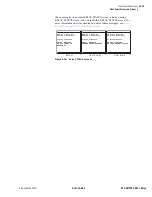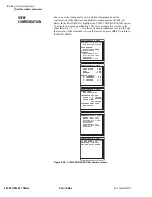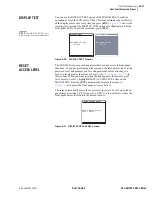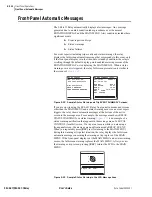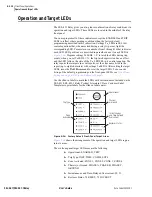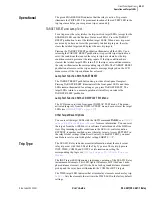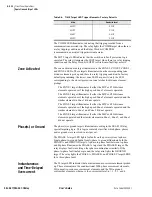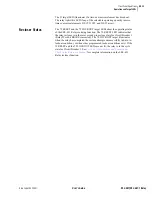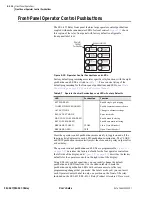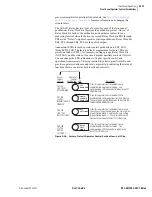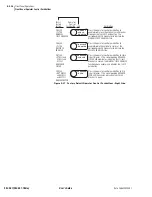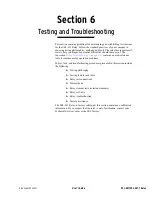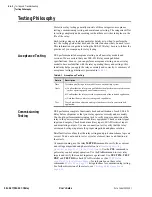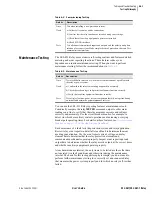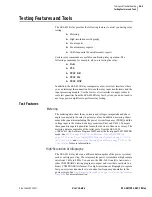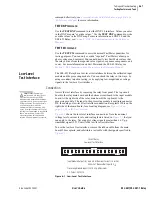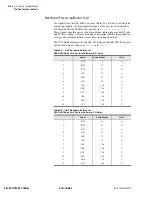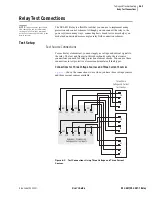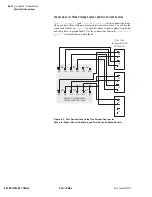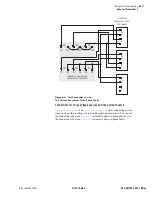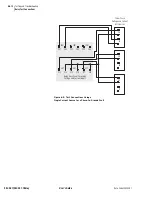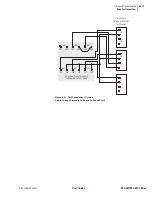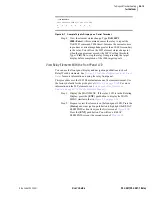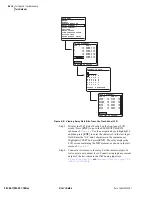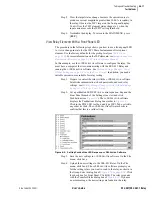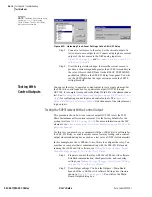
U.6.3
Date Code 20020501
User’s Guide
SEL-421/SEL-421-1 Relay
Testing and Troubleshooting
Testing Philosophy
Maintenance Testing
The SEL-421 Relay uses extensive self-testing routines and features detailed
metering and event reporting functions. These features reduce your
dependence on routine maintenance testing. When you want to perform
maintenance testing, follow the recommendations in
You can use the SEL-421 Relay reporting features as maintenance tools.
Periodically compare the relay
METER
command output to other meter
readings on a line to verify that the relay measures currents and voltages
correctly and accurately. Use the circuit breaker monitor, for example, to
detect slow breaker auxiliary contact operations and increasing or varying
breaker pole operating times. For details on these features, see
Monitor on page A.2.2 in the Applications Handbook
Each occurrence of a fault tests the protection system and relay application.
Review relay event reports in detail after each fault to determine the areas
needing your attention. Use the event report current, voltage, and relay
element data to determine that the relay protection elements and
communications channels operate properly. Inspect event report input and
output data to determine whether the relay asserts outputs at the correct times
and whether auxiliary equipment operates properly.
At each maintenance interval, the only items to be tested are those that have
not operated (via fault conditions and otherwise) during the maintenance
interval. The basis for this testing philosophy is simple: you do not need to
perform further maintenance testing for a correctly set and connected relay
that measures the power system properly and for which no relay self-test has
failed.
Table 6.2
Commissioning Testing
Details
Description
Time
Test when installing a new protection system.
Goals
a) Validate all system ac and dc connections.
b) Confirm that the relay functions as intended using your settings.
c) Check that all auxiliary equipment operates as intended.
d) Check SCADA interface.
Tests
Test all connected/monitored inputs and outputs, and the polarity and phase
rotation of ac connections. Make simple checks of protection elements. Test
communications interfaces.
Table 6.3
Maintenance Testing
Details
Description
Time
Test at scheduled intervals or when there is an indication of a problem with
the relay or power system.
Goals
a) Confirm that the relay is measuring ac quantities accurately.
b) Check that scheme logic and protection elements function correctly.
c) Verify that auxiliary equipment functions correctly.
Tests
Test all relay features/power system components that did not operate during
an actual fault within the past maintenance interval.
Summary of Contents for SEL-421
Page 8: ...This page intentionally left blank ...
Page 30: ...This page intentionally left blank ...
Page 110: ...This page intentionally left blank ...
Page 204: ...This page intentionally left blank ...
Page 284: ...This page intentionally left blank ...

